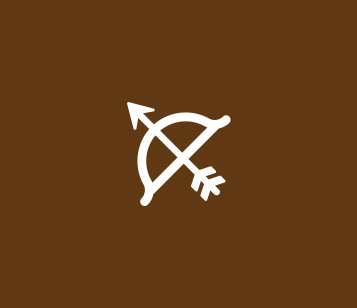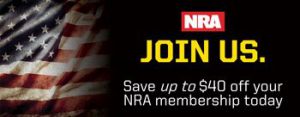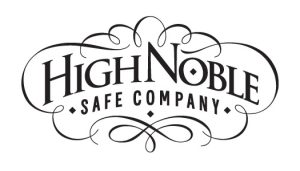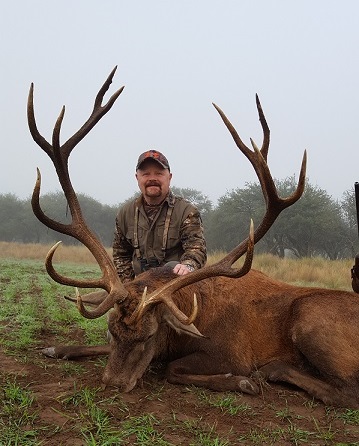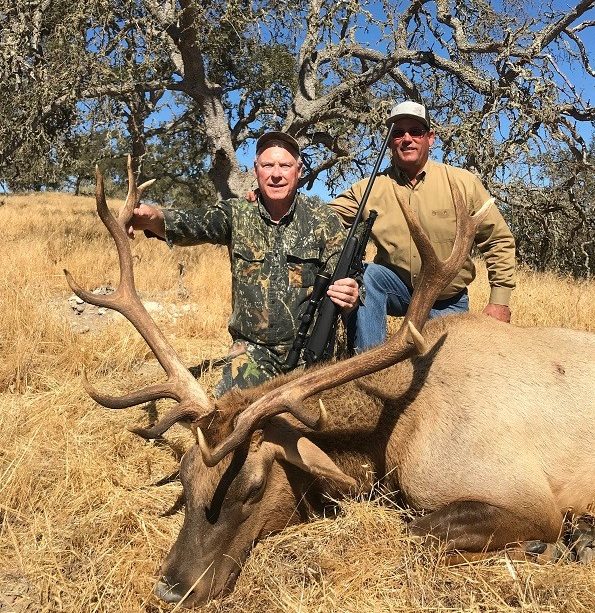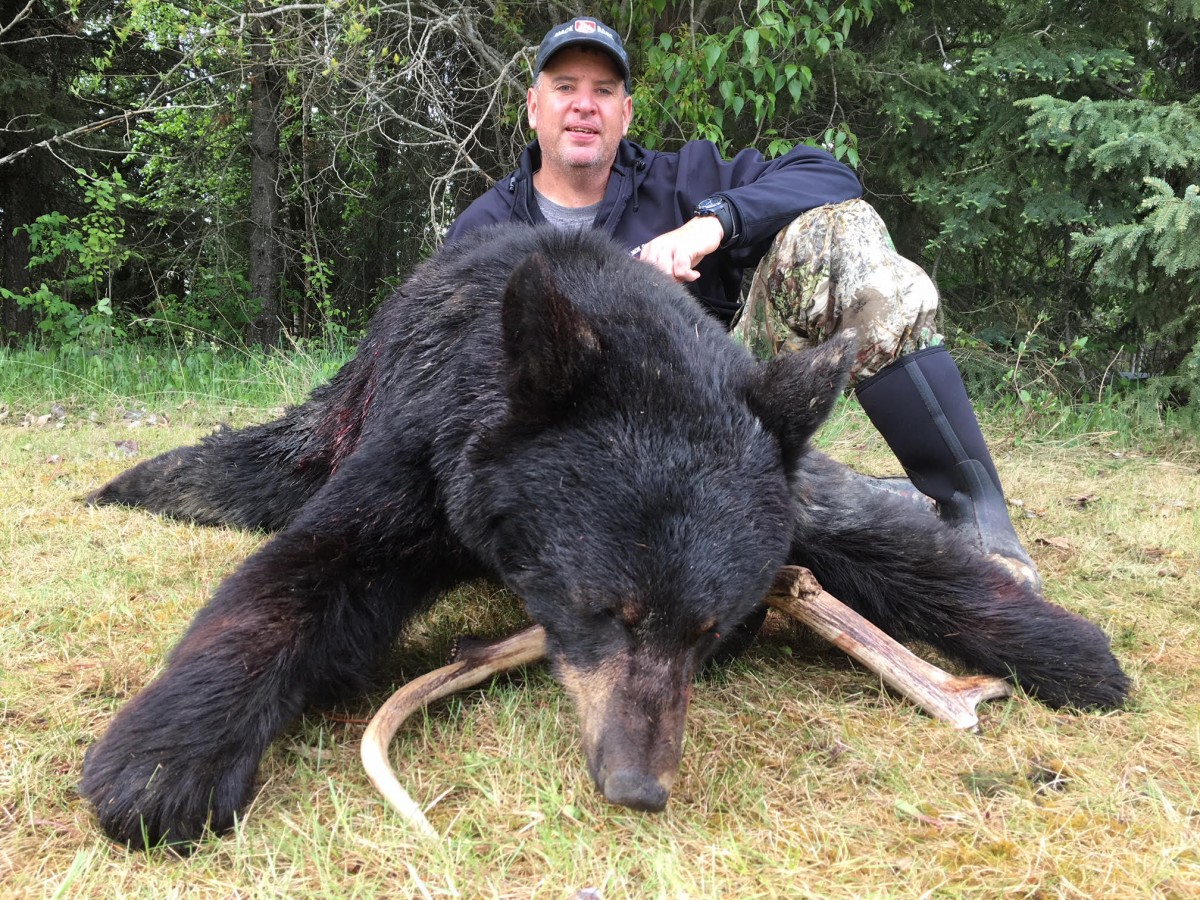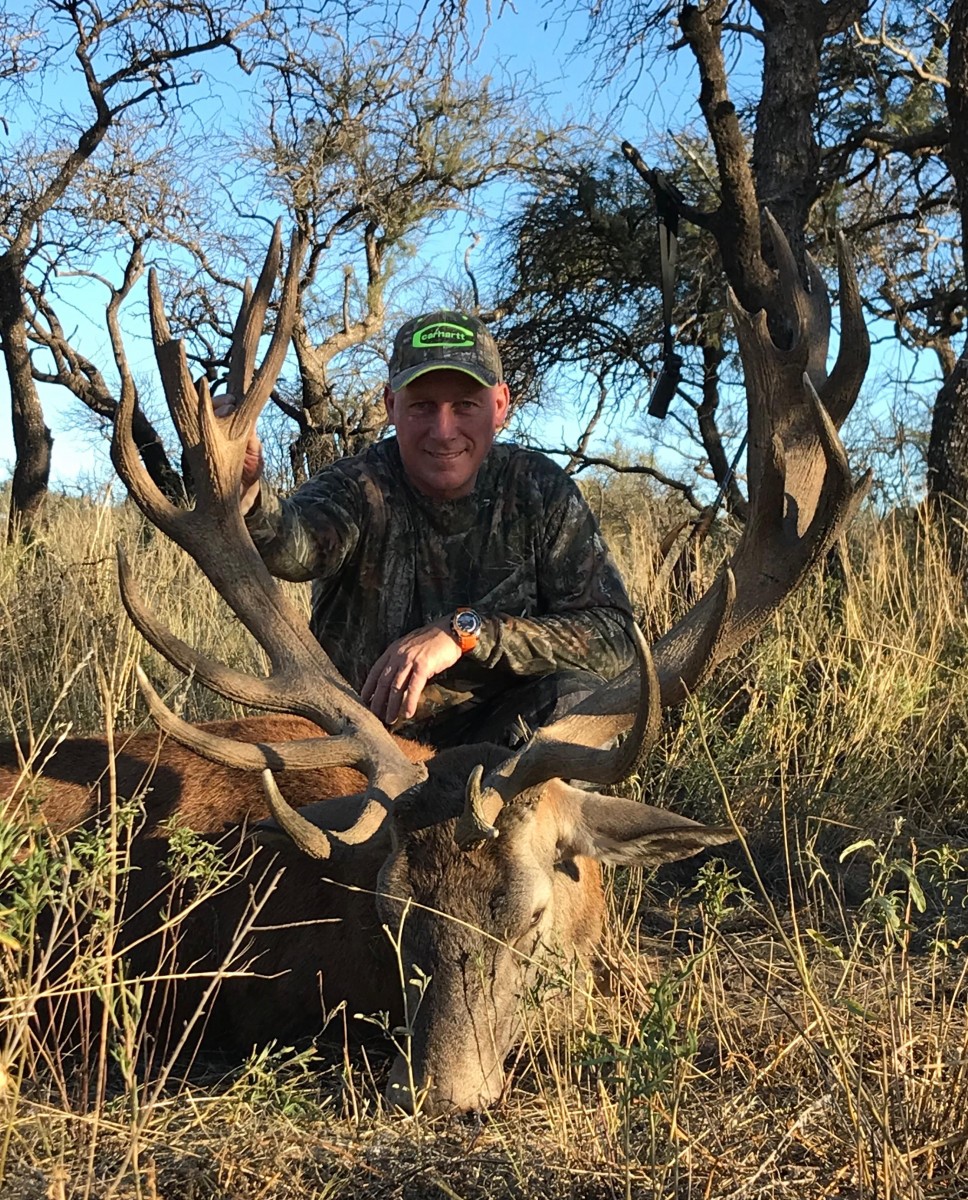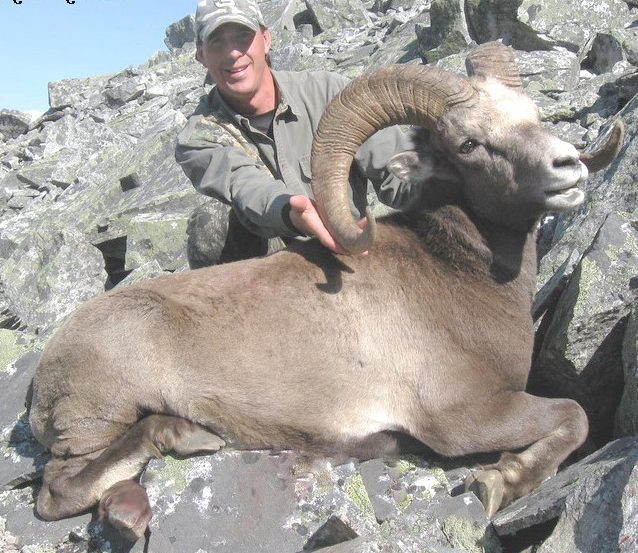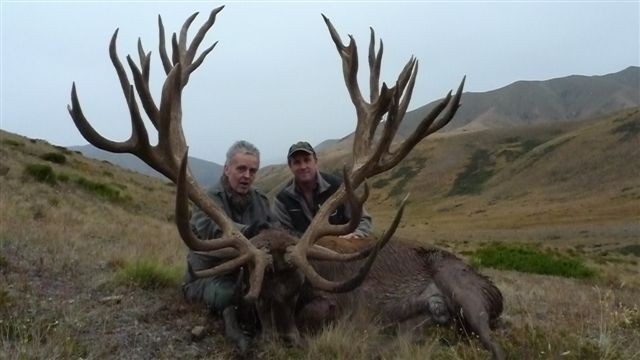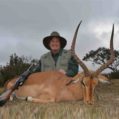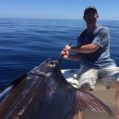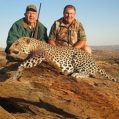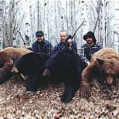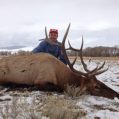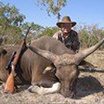DESERT/ARIZONA-MEXICO HUNTING GEAR LIST
Each season I am asked by many hunters which brand or type of a certain item I recommend. As with anything, it is important to buy the highest quality equipment that you can afford. This eliminates having to purchase that item again or more often than you would like. I also strongly recommend buying items of minimal weight. This cuts back on fatigue while in the field, allowing you to go that extra mile.
Binoculars – If you are to own one set of binoculars, the 10X42 would be the best all-around size. Binocular sizes that work well for open country hunts (such as coues, mule deer, antelope, bear, sheep) would be: 10X42, 12X50 or 15X56. For forest hunts (such as archery elk and turkey): 8X30, 10X32, or 10X42. Swarovski, and Leica are superior European glasses that bring in much light and detail. I highly recommend them. If you don’t want to spend $1200-$3200 on a pair of these fine European optics, the higher end models of Vortex are great binoculars.
Riflescope – European optics companies produce great binoculars, but my recommended riflescope is the Great Ol’ American brand Leupold. The reason is due to their ability to take a beating! I have seen Leupolds take a tumble down a mountain, end-over-end, after which the hunter picks up the weapon to kill an animal at nearly 500 yards! These are tough scopes and will usually not lose zero with a bad mishap. I have witnessed this event with every other brand, even the $2500 European scopes, and cannot say the same for them. Variable power settings are a must. A 4-12X is minimum. A 3-9X is only good for javelina, cow or muzzleloader hunts when shooting distance are typically closer than 250 yards, but it is too small for big canyon hunting of any other species. If you have ever looked at an animal over 250 yards on 9 power, you know what I mean. Leupold Model Vari-X III in 6.5-20X or 4.5-14X will suit your needs for any species at any distance. If you are coming on a bighorn sheep, coues or bear hunt, go with a 40mm objective to save weight in this rougher terrain.
Bipod – It is highly recommended that you mount a bipod on your rifle. Don’t skimp and buy an “off the wall” brand thinking they are all the same. I have used most bipods on the market. Most cheap brands come apart after a few uses in the rugged mountains or are designed poorly causing wobble.
Sleeping Bag -Sleeping bags come in all shapes and sizes but what is important is the thermal rating and compactness (packing in your luggage for the plane). Cold month hunts in November through April may be spent in wall tents. Outside nighttime temperatures may get as low as 10 degrees, with inside tent temperatures around 50 with the heater on. If the heater goes out in the middle of the night (and it more than likely will), you need to be prepared. I recommend a 20 degree rating for those cold weather hunts. During mild weather hunts in August through October, I recommend a 40-50 degree rating. Slumberjack, Eureka, and REI have a line of compact sleeping bags at various temperature ratings that fit nicely into your luggage. Also, don’t forget a small travel pillow or Coleman camp pillow. These stuff into a sack to save room for luggage packing.
Beanie – A beanie is great for keeping your head warm while sleeping during cold weather hunts. It eliminates the need to bury your head under your sleeping bag and it actually keeps your whole body warmer while sleeping.
Tweezers – Every plant in the desert can either poke, stick or jab you, often leaving stickers and thorns throughout your body. Tweezers are essential in getting these thorns out if they happen to occur, especially the fine cactus needles. It seems like the most favorable activity for our hunters during downtime is to sit around camp and pull out thorns…
Blisters – For those who are prone to blisters, mole skin is a great remedy. Also, the small pads for corns and callous by Dr. Scholl’s work well around blisters too. There are also gel-type blister bandages on the market. Many hunters have quit hunting or gone home early because of severe blisters.
Daypack – Most hunters come with packs too small…. One reason to have a good-sized pack is to handle all the layers of clothing that you will be peeling off during the day. Remember that mornings are often 35-40 degrees cooler than noontime temps, which means you will be layering. Another reason to have a decent pack is that, if you tag an animal, you will need to take the guide’s gear in your pack (and they have a lot of stuff) as he packs out the game. If it is a large animal such as a bear or elk, you will need to help pack out the game. You do not need a giant backpack, but a good daypack with a waste strap for putting the weight above the hips and not all on the shoulders is best. You should have a mid-sized pack with a capacity around 2000 – 3000cu-in.
Water Transport – As many as three-hundred people die in the desert per year due to severe dehydration. Having enough water in your pack is very important in this arid environment, especially after the kill. Once you kill, you just doubled or even tripled your water requirement in order to help pack out the extra weight. THIS IS THE DESERT! There are no streams to drink from if you are out of water. If coming during our August through October hunts, two liters should be taken into the field at all times, even if you don’t think you need it. I don’t mean two little drinking water bottles that you buy in the case, but two LITERS. Camelback, Platypus, or Dromedary Bladders work well, but make sure you rinse out the bad, plastic taste from newly purchased bladders. The humidity in Arizona and Southern New Mexico is typically 5%, which can dry you out in minutes! Some don’t even know they are dehydrated until it’s too late. If you are worried about the added weight of water, try to shave off a few pounds elsewhere.
Hiking Boots – Most AZ and NM terrain is very rocky. Get a boot with good ankle support and deep traction lugs.
Hiking Socks – A good pair of wool blend socks, whether hunting in the hot month of September or the cold of January, is essential to keeping your feet from being too moist and helps to eliminate blisters. Please, for the sake of the other hunters in your tent, bring one pair per day!
Walking Stick or Trekking Pole – A walking stick or trekking pole will help to stabilize you on the loose ground or steep slopes. Most models are compact, lightweight and telescopic, folding down to around 25″. Make sure to use the rubber tip, as the metal tip clanking on the ground scares game on a regular basis. Some hiking sticks have a V-yoke to act as a shooting stick. This can be a very useful tool when getting a “surprise” offhand shot.
Clothing – There are many brands on the market, but what is important is the material they are made of. High performance hunting clothing is not 100% Cotton. Try a polyester/cotton blend or, better yet, a 100% poly material.
Camouflage Pattern – The Camo pattern to bring depends upon which type of hunt you will be on; either a desert hunt or a forest hunt. Desert hunts such as bighorn sheep, bear, deer, javelina, and antelope require lighter camo patterns like Natural Gear, Mossy Oak Brush, King’s Desert Shadow, or Sitka Gear’s Optifade Open Country. Most colors in the desert during hunting season are light shades of gray/brown. Stay away from the really bright “prairie” patterns though. You’ll stand out like a sore thumb using the prairie patterns. Forest hunts such as Elk and Turkey require darker camo patterns like Mossy Oak New Break-Up or Real Tree AP and even Kuiu Verde.
Portable Field Seat Cushion – This may not sound too important, but when you are glassing and sitting on a cold, jagged boulder for hours, it is invaluable. The comfort a foam pad brings will help you be more patient. Make sure it is not too big or it will be cumbersome to carry in or on your pack. Try Hunter’s Specialties Bunsaver brand. Don’t bring a field chair unless you don’t mind carrying the added weight or bulk.
12-Volt Vehicle Cell Phone Charger – If you really need to use and re-charge your cell during the hunt, please bring a 12-volt vehicle cell phone charger (cigarette lighter plug). The guides will let you plug into their vehicle when you need charging. I recommend turning off your cell phone until you need to make a call. We don’t hunt near towers and typically have poor reception. If you keep the phone on during the daytime, it will search for a tower, thus, drain your battery within hours. Note: some areas we hunt have no cell phone service. The Gila National Forest has no service. If hunting in NM and contact with the outside world is important to you, I recommend renting a satellite phone for your personal use.
Rifle Caliber Selection – Basically, choose a caliber that you can handle and shoot accurately without flinching. If that means getting a muzzlebrake installed, than that is what you need to do. We all know hunters that use big magnums, but miss everything they shoot at because they flinch and are afraid of the gun. Again, a muzzlebrake will do wonders! For hunters that like to use different calibers for different species, here is a range of calibers to use for each species: Javelina – .243, up to .30-06; Coues and Mule Deer, Sheep, Antelope – .25-06 up to .300 Magnum; Bull Elk and Bear- 7mm Magnum up to .338 Magnum. If I were use one cartridge for all rifle hunting, it would be either one of the .300 Magnums or Short Magnums. These cartridges can be loaded and used for all North American big game species from a 45 pound javelina to a 2500 pound bull bison. They are also superior for long range shooting in high winds across canyons. Another important point that I must mention is that you should have a weapon that is as lightweight as possible. Rifles with heavy varmint or target barrels might be nice from a bench or while prairie dog shooting, but the mountains of the Southwest are no place for a heavy gun!
Ammunition – Just like anything, don’t buy the cheapest ammo. Good loaded rifle ammo usually costs over $50.00 per box. The more expensive Federal Premiums, Remington Premier or Winchester Supreme loaded ammunitions are very accurate and precise. I recommend a bullet with a high ballistic coefficient. More than likely, you will not get any close shots in this open country anyway! Important: sight in with the ammo you will be using on the hunt. I see many hunters buy a cheap box of ammo to sight in their gun and use a totally different load on the hunt. All ammo shoots differently and is magnified at long ranges.
Bullet Weight – You want to get the best trajectory and energy transfer for the cartridge you are shooting, which often means choosing the correct bullet weight. Flat trajectory is very important in this open country. For instance, you wouldn’t want to hunt open country elk using a .30-06 loaded with 200 grain bullets. It seems logical to use as heavy a bullet as possible on a big animal, but it doesn’t work that way with long range hunting. The 200gr .30-06 bullet might have high energy coming out of the muzzle, but it will have terrible trajectory at long distance, unlike a flatter shooting 165 grain .30-06 bullet would. If you look at the charts of the offered bullet weights for a particular cartridge, the middle weight will more than likely give you the best trajectory and knockdown power at long range. The key is performance at long range. For instance: a .243 should get the best long range performance with a 90gr bullet, a .270 should get the best long range performance with a 130-140gr, a 7mm Magnum should get the best long range performance with a 150gr, a .30-06 should get the best long range performance with a 165gr, a .300 Winchester Magnum or .300 Short Magnums should get the best performance with a 165gr, a .300 Remington Ultra Magnum should get the best long range performance with a 180gr, a .325 Magnum should get the best long range performance with a 200gr, and a .338 Magnum should get the best long range performance with a 225gr. If you cannot find these weights, then go lighter.
Weight of Gear – I strongly urge big game hunters to bring field items that are LIGHTWEIGHT, without compromising quality of course. If you can save a few ounces on each item, it can add up to pounds and will be felt (or not felt) at the end of the day. Bringing items into the field like: rifles with varmint barrels or heavy wooden stocks, big spotting scopes, big tripods, field chairs, sand bags, video cameras, big SLR cameras with telephoto lenses, sidearms, multiple boxes of ammo, chair or stool, giant Rambo knives, etc., is a common mistake. Also, after the first hike, you will figure out that there are things in your pack that you don’t need. Unfortunately, it always takes that first hike for people to figure this out. If there is anything in your pack that you don’t really need (within reason), then leave it behind. Saving weight reduces fatigue while in the field, allowing you to go that extra mile, thus, increasing your odds of harvesting a real trophy and having a more enjoyable hunt!
Temperature/Weather – The climate in Arizona and New Mexico is very arid and dry with the humidity often being around 5%. There is nothing to hold in the heat. This means the fluctuation between morning and afternoon temps could be drastic. Morning temps, as a general rule, are usually 35-40 degrees different from afternoon temps. That means if it is 65 degrees as a daytime high, the nighttime low will usually drop to about 25 or 30. The sun is intense during the day, but once the sun goes down, it could get quite bone chilling and happen very quickly. Therefore, we recommend layering. Also, the wind will typically blow about 10-30mph for at least half of your hunt, so expect temps to feel cooler than they really are. Rain and snow are not normal, but could happen on your hunt.
CLOTHING
- Coat
- Beanie
- Neck Warmer
- Good Boots
- Sock Liners
- Belt
- Leather Gloves
- Underwear
- Hats
- Saw/Knives
- Flashlight
- Water Bottle/Bladder Light Weight Bags
- Folding Saw
- Padded Seat
- Utensils
- Scope Cover
- Hunting License Plate
- Hand Warmers
- Permit/Tag
TOILETRIES/FIRST AID
- Toiletry Bag
- Anti-Diarrhea Meds
- Neosporin
- Thermals
- Rain Gear Camouflage/Orange
- Underwear
- Gloves
- Shirts (long/short)
- Socks
- Pants
OPTICS/ELECTRONICS
- Spotting scope
- Extra Memory Card(s)
- Mole Skin Sun Screen
- Soap (Travel Size)
- Talcom Powder
- Chapstick
- Tooth Paste
- Baby Wipes
- Body Powder (Travel Size)
- Tooth Brush
- Energy Additives
- Band-Aids Towel (Travel Size)
- First Aid Kit
- Shampoo (Travel Size)
- Aspirin
- Medical Tape
- GPS/Radio
- Binoculars
- Satellite Phone
- Radio Ear-Bud
- Tri-pod
- Camera Adapter
- Lens Cloth
- Range Finder
- Wireless Mic
- Video Camera
- Strong Pain Medicine
MISCELLANEOUS
- Twine
- Electrical Tape
- Rope
OPTIONAL
- Knee Pads
- Game Calls
- Chaps
- Tent
- Lighter
- Leatherman
- Gun Cleaning Kit
- Bi-Pod
- Gun Scabbard
- Camera
- Extra Camera Batteries
- Camera Charger
EQUIPMENT
- Weapon
- Backpack
- Backpack Rain Cover
- Ear Protection
- Scent Block
- Headlamp
- (3) Zip Ties
- Water Purifier
- Belt Loop Bullet Holder
- Sleeping Bag
- Surgical Gloves
- Dry Bags
- Sunglasses
- Walking Stick
- Pillow/ case
- Meat Bags
- Shoe Laces
- Small Unbreakable Mirror
- Water
- Cooler (If Traveling By Vehicle)
HAPPY HUNTING!



